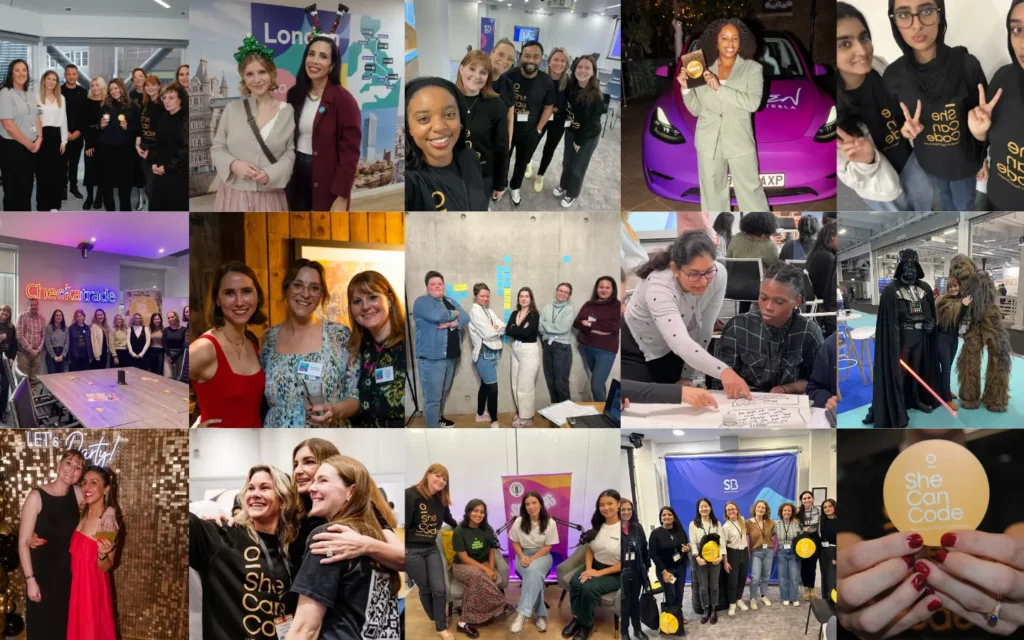When people hear the title Enterprise Architect, they often picture someone buried in diagrams, isolated in a corner office, setting abstract IT standards no one understands.
 It sounds technical, complicated and perhaps a bit unapproachable.
It sounds technical, complicated and perhaps a bit unapproachable.
But here’s the truth:
Enterprise Architecture (EA) is one of the most strategic, collaborative, and people-oriented roles in tech.
It’s about designing how an entire company works across systems, data, processes, and people to enable agility, resilience, and transformation. And it’s a role where we urgently need more women.
So, What Is Enterprise Architecture?
Enterprise Architecture is the discipline of aligning business and technology. It ensures that the systems an organization invests in support the business not hold it back.
That means looking beyond individual tools or teams. Architects think holistically:
- How do our platforms support the customer journey?
- Where are the inefficiencies in our processes?
- What needs to evolve as our strategy changes?
The EA Role: Not Coder, But Connector
An Enterprise Architect wears many hats:
- Strategist – Defining future business and technology states.
- Translator – Turning business needs into technical solutions.
- Designer – Shaping how systems, data, and platforms work together across the enterprise.
This isn’t about writing code. It’s about creating clarity where there’s chaos. It’s about connecting the dots.
Why EA Is a Great Role for Women in Tech
Tech is still far from equal, especially when it comes to leadership and strategic decision-making. Tech is still far from equal particularly in leadership and strategic roles. In fact, women currently make up only 12.3% of enterprise architects — a stark reminder of how underrepresented they remain in one of the most influential roles in tech.
That’s why it’s critical to raise visibility and open new pathways for women into this space. But EA offers a path that doesn’t require 20 years of coding experience. It values qualities that are often underappreciated in technical spaces:
- Empathy
- Systems thinking
- Communication
- Long-term vision
Many women thrive in these areas often thanks to diverse career journeys, interdisciplinary experience, or natural ability to bring people together.
Why EA Fits
Enterprise Architects work at the intersection of people, business, and technology. They break down silos. They shape decisions at the highest levels. And perhaps most importantly they build tech strategies that are human-centered, inclusive, and built to last.
Research shows that diverse teams outperform homogeneous ones in decision-making 87% of the time. Enterprise Architecture thrives on broad thinking and balanced judgment making inclusivity not just a value, but a strategic advantage.
My Story: From Tech Leadership to Architecture
I’ve spent over a decade in IT moving from hands-on technical roles to leading major transformation initiatives. Today, I serve as a Technology Lead and Enterprise Architect at IAG GBS, part of International Airlines Group.
Our systems span countries, departments, and platforms. My job is to make sure all the moving parts are working toward the same business goals.
But I didn’t always know what “Enterprise Architecture” meant. Like many, I discovered it by accident through curiosity, experimentation, and mentorship. Eventually, I realized: this is where all my strengths come together.
I love patterns, long-term thinking, and asking not just how things work but why we’re doing them in the first place. That mindset is what brought me to architecture.
What I Actually Do Every Day
People often ask: What does an Enterprise Architect really do?
Here’s a snapshot of my day-to-day:
- I meet with business leaders to understand their goals and challenges.
- I collaborate with tech teams to make sure solutions are scalable and future ready.
- I lead architecture reviews to guide consistent, informed decision-making.
- Yes, I create diagrams, but they’re just artifacts. The real work is in shaping the decisions those diagrams represent. As Whynde Kuehn, a globally recognized thought leader in EA, puts it: “Enterprise architecture is also a key enabler of end-to-end strategy to execution.” That single sentence captures the reality of what we do every day.
- I mentor others especially women and early-career professionals because this is still a career path many don’t know exists.
Architecture isn’t about being the smartest person in the room. It’s about helping others make better decisions. It’s about designing solutions that last.
Challenges? Yes. But Also, Real Impact.
Let’s be honest: EA isn’t always easy.
You’re often the one asking hard questions, pointing out risks, or challenging teams to think differently.
You work in ambiguity, balance competing priorities, and sometimes have to say no.
But the reward?
You get to shape the future of your company.
You help others succeed.
You make complexity understandable, and you prevent problems before they happen.
And when you do it well, your work becomes invisible because everything just works.
4 Practical Takeaways for Women Considering EA
If you’re curious about EA but don’t know where to start, here’s what I’ve learned:
- You don’t need to know everything.
No one starts with all the answers. Begin by learning how business and technology interact. - Be curious, not just technical.
Great architects ask smart questions, listen deeply, and understand the full picture. - Learn to translate.
If you can explain a complex problem in plain language, that’s a leadership superpower. - Say yes to visibility.
Join meetings. Share your thinking. Volunteer for cross-functional work. EA is a leadership role don’t stay in the background.
Where to Go from Here
The world needs more women who can think holistically, lead with empathy, and design solutions that serve real people. If you thrive in complexity, enjoy collaboration, and want to make a long-term impact EA might just be your path.
You don’t need permission or a job title to get started. Start learning. Start leading. Start shaping the future your way.
Because the best architects don’t just design systems — they design possibility.








